PLANT REPRODUCTION:
The process by which living organism produce their offspring for the community of the species is called reproduction. It is a characteristic of all living things
The mode of reproduction vary according to individual species available conditions. It may be simply by division of the parent cell as in unicellular organisms, by fragmentation of the parent body, by formation of buds and spores, or it may be very elaborate involving development of male and female reproductive organs(stamens and pistils)
Irrespective of reproduction, all organism pass in their hereditary materials to their offspring during the process of reproduction.
MODES OF REPRODUCTION:
the various modes by which plant reproduce are of three types
(a) vegetative
(b) Asexual
(c) Sexual
in vegetative and asexual modes of reproduction, offsprings are produced from a vegetative unit formed by a parent without any fusion of gameetes or sex cells.
- A single parent is involved.
- Offspring are genetically identical to the parent.
(a) Vegetative reproduction may be of the following types:
i. Vegetative reproduction: It involves formation of new plantlets from vegetative (somatic)
cells, buds or organs of the plant. In this case,a vegetative part of the plant (root, stem, leaf or bud) gets detached from the parent body and grows into an independent plant. It is similar to asexual reproduction in that it also requires only mitotic division, no genetic fusion is involved, and newly- formed plants are genetic clones of the parent plant.
Figure 1:
A. (stem cutting of rose).
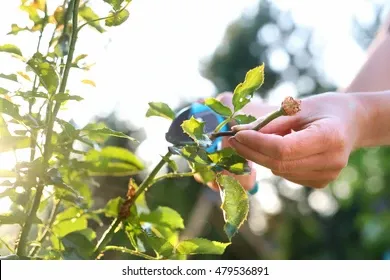
source:shutterstock
B. (Potato plant sprouting from an eye).
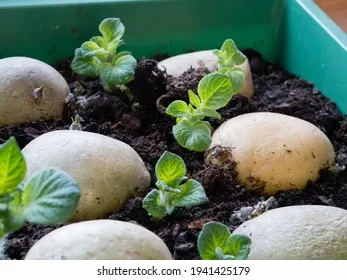
source:shutterstock
C. (Leaf of bryophyllum with buds in the margin).
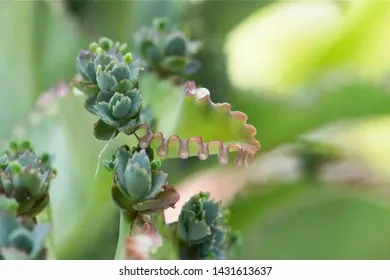
source:shutterstock
Vegetative reproduction can be natural (as outlined above) or artificial. Artificial methods include; cutting (e.g, Rose, Croton, Sugarcane), layering (eg. Strawberry, grapevine) and grafting (e.g, citrus, mango, apple).
ADVANTAGES OF VEGETATIVE REPRODUCTION
- Rapid means of reproduction and spread
- offsprings identical to parent The desired varieties can thus be preserved genetically for use.
- Food storage organs allow perennation or survival in adverse conditions.
DISADVANTAGES OF VEGETATIVE REPRODUCTION
- overcrowding and competition for space unless separated artificially.
- New varieties cannot be produced by this method except by mutation.
- Diseases typical of the species are rapidly transmitted and can be detrimental to a crop.
ii. Fragmentation: In filamentouse algae, an accidental breaking of the filament into many fragments, each fragment having at least one cell, may give rise to a new filament of the algae by cell division e.g. spirogyra.
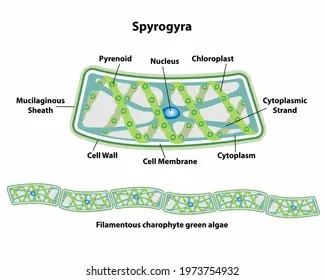
source:shutterstock
Figure 2: Fragmentation in spirogyra (an alga).
iii. FISSION: it occurs in unicellular organisms like bacteria and yeasts where the content of the parent cell divides into 2,4 or 8 daughter cell grows into a new organism.
iv. BIDDING: It also occurs in unicellular plants. A bud like outgrowth is heredity formed on one side of the parent cell and soon it separates and grows into a new individual e.g. in yeast.
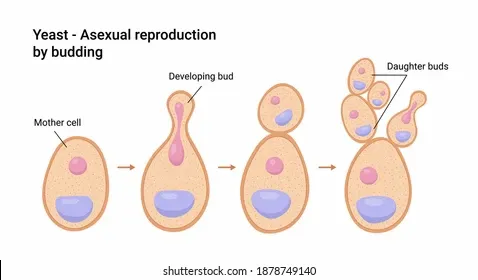
source:shutterstock
Figure 3: Reproduction in yeast by budding.
(b) Asexual reproduction takes place by asexual spores which may be flagellate or nonflagellate;
SPORE FORMATION: in lower plants including bryophytes and pteridophytes, special reproductive units develop asexually on the parent body. These are called spores they are microscopic and covered by a protective wall. When they reach suitable environment they develop into a new plant body e.g in bread moulds, miss, fern.
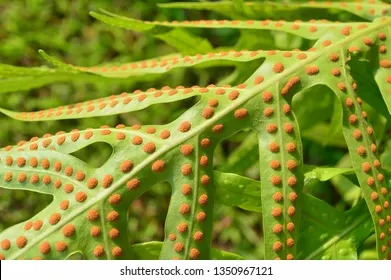
source:shutterstock
Figure 4: Reproduction through spore formation; fern and fungus.
In higher plant like pea,maize and gymnosperms, asexual reproduction is always heterosporous. Here, spores are produced after meiosis. The small male spores called microspores give rise to male gametophyte. The large female spores are called megaspores, and they give rise to female gametophytes.
(c) sexual reproduction involves fusion of male and female reproductive cell (gametes) which are haploid and are produced by male and female reproductive organs. Further development of zygote gives rise to a new individual which is diploid.
In this case, at some stages of life history, meiosis is involved and the offspring are not genetic clones of their parents, but are genetically different and generally exhibit mixed characters of their parents.
Apomixis: this is a unique mechanism of asexual reproduction in certain plants (e.g. Dandelions) which produce seeds without pollination and fertilization. Since there is no fusion of male and female gemete, any somatic cell of ovule which is diploid, gives rise to the embryo and then ovule matures into seed. The seeds are then dispersed. The interesting fact is that apomixis is an asexual process but disperse it's seeds like those of plants that undergo sexual reproduction.
APOMIXIS: this is a unique mechanism of asexual reproduction in certain plants (e.g. Dandelions) which produce seeds without pollination and fertilization. Since there is no fusion of male and female gemete, any somatic cell of ovule which is diploid, gives rise to the embryo and then ovule matures into seed. The seeds are then dispersed. The interesting fact is that apomixis is an asexual process but disperse it's seeds like those of plants that undergo sexual reproduction.
REPRODUCTION IN LOWER PLANTS
- CHLAMYDOMONAS:
It is haploid unicellular alga found in fresh water ponds. The plant body is pear-shaped with two flagella attached at the narrow end.
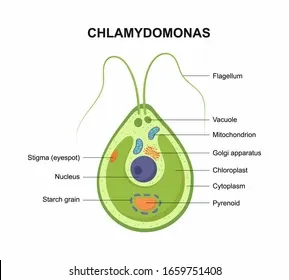
source:shutterstock
Figure 5: Chlamydomonas cell
(A). Asexual Reproduction
- Asexual Reproduction by Zoospores: * if plenty of water is available for free swimming, chlamydononas reproduce by flagellate thin-wall spores, called zoospores.
- Chlamydomonas cell loses flagella and becomes non-motile.
- It protoplasm (cytoplasm and nucleus) divides mitotically and forms 2-16 daughter protoplasts, each of which develops flagella, and is called a zoospore.
- Asexual Reproduction by Aplanospores:
- If a thin-film of water is available where swimming is not possible ,chlamydomonas produce thin-walled, non-flugellate daughter protoplasts, called aplanospores.
- The parent cell loses flagella and becomes highly extended. It's protoplasm divides repeatedly to produce 100 or more daughter protoplasts, each of which is called an aplanospores.
- The whole structure containing groups of non-motile aplanospores resembles a non motile colonial alga, called Pamella, and so this is called Pamella stages of chlamydomonas.
Figure 6: Asexual reproduction in chlamydomonas.
(A). Mature cell
(B). Daughter cell (zoospores formed be asexual reproduction)
(C). Zoospores after escape from parent cell.
(D). Palmella stage of chlamydonas.
(B). SEXUAL REPRODUCTION
Chlamydonomas reducesses sexually by isogamy, anisogany or oogamy depending on the species :
(I). SEXUAL REPRODUCTION BY ISOGAMY:
- Isogamy is exhibited by chlamydomonas and C. eeherenburgii.
- The male and female celksbeckmes motile by loosing their flagella.
- The protoplasm of each cell divides mitotically into 32-64 daughter cells.
- Each zoospores grows into a new adult chlamydonomas plant.